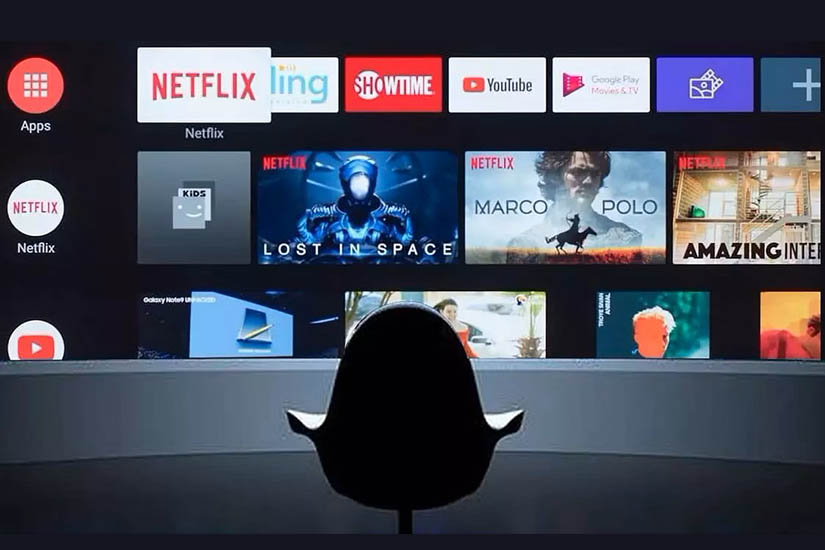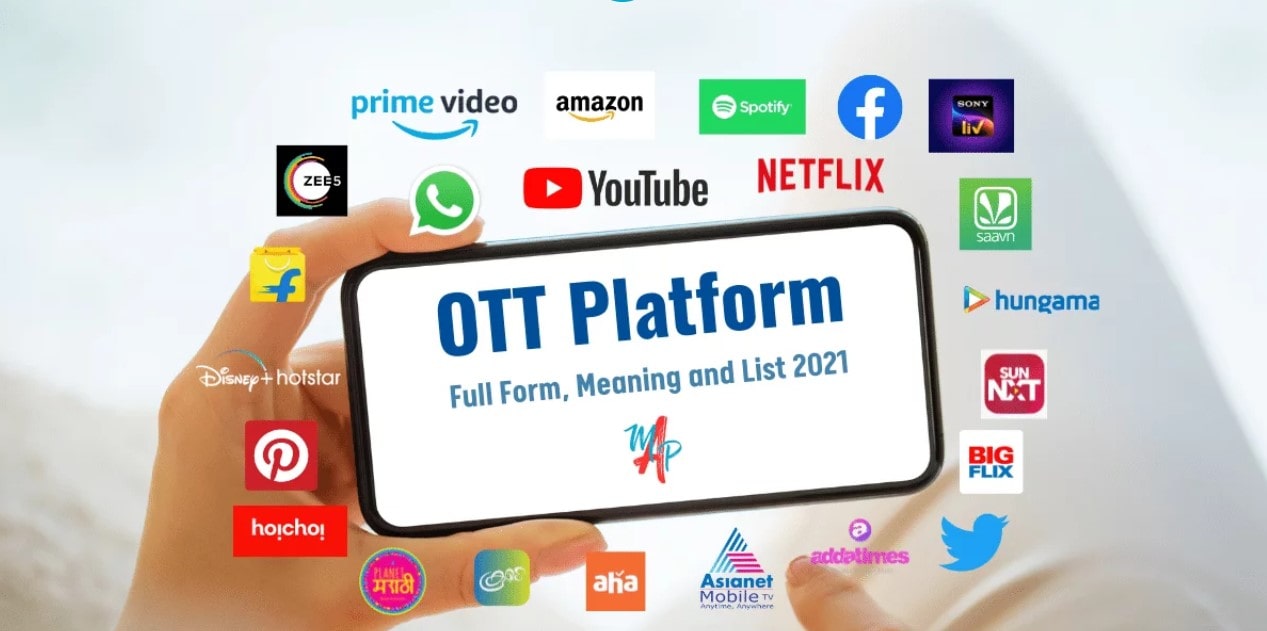What is an OTT Platform and Revenue Models

What is an OTT Platform and How Does It Earn Money
In today’s digital era, Over-the-Top (OTT) platforms have revolutionized the way we consume media and entertainment. OTT platforms refer to online streaming services that deliver video content directly to viewers over the Internet, bypassing traditional cable or satellite television providers. With the rise of smartphones, smart TVs, and high-speed internet, OTT platforms have gained immense popularity globally. This article explores the concept of OTT platforms, delves into their business models, and examines the various strategies they employ to monetize their services and generate revenue.
1. Introduction to OTT Platforms
In today’s digital era, Over-the-Top (OTT) platforms have revolutionized the way we consume media and entertainment. OTT platforms refer to online streaming services that deliver video content directly to viewers over the internet, bypassing traditional cable or satellite television providers. With the rise of smartphones, smart TVs, and high-speed internet, OTT platforms have gained immense popularity globally. This article explores the concept of OTT platforms, delves into their business models, and examines the various strategies they employ to monetize their services and generate revenue.
Definition of OTT Platforms
Are you tired of traditional cable TV and looking for a more convenient way to watch your favorite shows and movies? Well, the solution to all your entertainment woes lies in OTT platforms! But wait, what exactly are these mysterious platforms? OTT stands for “Over-The-Top,” and it refers to streaming services that deliver video content over the internet. Basically, it’s like having a virtual cable box without the hassle of cables and contracts.

Evolution of OTT Platforms
OTT platforms have come a long way since their inception. Remember the days when we relied on VHS tapes and DVDs to catch up on missed episodes? Ah, the struggle! But thanks to modern technology, we now have access to a vast array of content at our fingertips. From Netflix to Hulu to Amazon Prime Video, these platforms have revolutionized how we consume entertainment. The evolution of OTT platforms has given us the freedom to watch what we want, when we want, and wherever we want.
Popular OTT Platforms in the Market
The OTT market is brimming with options, catering to all kinds of tastes and preferences. When it comes to the big players, Netflix is the undisputed ruler of the streaming realm, offering a smorgasbord of TV shows, movies, and original content. Amazon Prime Video is another heavyweight, bringing us thrilling series like “The Boys” and “Fleabag.” And let’s not forget about Hulu, which allows us to catch up on our favorite network shows and boasts an impressive library of films. With so many options available, there’s an OTT platform for everyone.

2. Understanding the Business Model of OTT Platforms
Overview of the Business Model
Now that we have a grasp on what OTT platforms are, let’s dive into how they make money. At their core, OTT platforms operate on a subscription-based business model. They offer users a range of subscription plans, allowing them to access the platform’s content library for a monthly fee. This subscription revenue serves as the backbone for the financial success of these platforms, but it’s not the only way they rake in the cash.
Content Acquisition and Production
One key aspect of the OTT business model is the acquisition and production of content. These platforms invest heavily in securing rights to popular TV shows, and movies, and even producing their own original content. The better the content, the more subscribers they attract and retain. So, while you’re binge-watching the latest series, remember that your subscription fee contributes to the creation of more amazing content.
User Engagement and Retention
OTT platforms thrive on user engagement and retention. They want you glued to your screen, eagerly awaiting the next episode. To achieve this, they employ various strategies like personalized recommendations, user-friendly interfaces, and interactive features. The longer you stay subscribed and engaged, the more revenue they generate. It’s a win-win situation, really. You get your entertainment fix, and they get their monetary fix.
3. Revenue Models of OTT Platforms
Advertising Revenue Model
In addition to subscription fees, OTT platforms also generate revenue through advertising. You’ve probably noticed those pesky ads before your favorite show begins or during brief intermissions. Advertisers pay big bucks to get their products and services showcased to millions of viewers, and these platforms gladly oblige. However, some OTT platforms offer a more premium ad-free experience to their subscribers for an additional fee.
Subscription Revenue Model
Subscription revenue is the bread and butter of OTT platforms. The monthly subscription fees contribute significantly to their financial success. By offering different subscription tiers with varying features and content libraries, they provide users with options that fit their needs and budgets. It’s all about giving you the power to choose what you want to watch without breaking the bank.
Transactional Revenue Model
Transactional revenue is another revenue stream for some OTT platforms. This model allows users to rent or purchase individual movies or TV episodes on-demand, beyond what is already included in their subscription. So, if you missed that latest blockbuster in theaters or want to catch up on a missed episode pronto, you can simply pay a small fee and enjoy it instantly.

4. Advertising and Sponsorship Opportunities
Types of Advertising Formats
OTT platforms offer various types of advertising formats to cater to different advertisers’ needs. From short pre-roll ads that play before a video starts to mid-roll ads that interrupt your binge-watching session, to post-roll ads that appear after the content ends, there are plenty of opportunities for brands to showcase their products or services. These platforms understand the importance of balancing ads with a seamless viewing experience, so they strive to find the sweet spot.
Targeting and Personalization in Advertising
One of the beauties of OTT platforms is their ability to gather data and personalize the viewing experience. This extends to advertising as well. By leveraging user data, these platforms can deliver targeted ads based on your preferences and browsing history. So, if you’re a certified cat lover, don’t be surprised if you see ads for cute feline products popping up.
Sponsorship and Branded Content
Ever watched a series where the characters casually drink from a recognizable brand’s bottle? That, my friend, is an example of sponsorship and branded content. OTT platforms provide opportunities for brands to integrate their products or services seamlessly into the content, creating a win-win situation for both the platform and the advertiser. It’s advertising that doesn’t feel like advertising, and we’re here for it.
There you have it! OTT platforms are the superheroes of entertainment, providing us with endless hours of content and redefining how we consume media. So next time you tune in to your favorite OTT platform, appreciate the business model that keeps the entertainment flowing and the dollars rolling.5. Subscription-Based Monetization Strategies
Pricing and Packaging Options
Subscription-based OTT platforms have become increasingly popular, offering users access to a wide range of content for a recurring fee. These platforms employ various pricing and packaging options to cater to different consumer preferences. From basic plans for casual users to premium plans with additional perks, OTT platforms ensure there’s something for everyone. Whether you’re a binge-watcher or an occasional viewer, there’s a subscription plan that suits your needs and budget.
Exclusive Content and Original Productions
One of the key strategies for OTT platforms to earn money is by creating exclusive content and original productions. By investing in their own shows and movies, these platforms are able to differentiate themselves and attract a loyal subscriber base. From gripping dramas to laugh-out-loud comedies, original content has a way of hooking viewers and keeping them coming back for more. Plus, the buzz generated around these shows often leads to increased subscriber numbers and media attention.
5. Churn Management and Subscriber Retention
Once you’ve got subscribers, the challenge becomes retaining them. Churn management is an essential part of any successful OTT platform’s strategy. By constantly monitoring subscriber behavior and preferences, platforms can identify the reasons behind cancellations and take proactive steps to retain their customers. This could involve offering personalized recommendations, introducing loyalty programs, or providing incentives to keep subscribers hooked. After all, it’s much easier and cost-effective to retain existing subscribers than to attract new ones.

6. In-app purchases and Microtransactions
Virtual Goods and Upgrades
In-app purchases and microtransactions are another avenue for OTT platforms to generate revenue. These platforms often offer virtual goods and upgrades within their apps, allowing users to enhance their viewing experience. Whether it’s unlocking additional features, gaining access to exclusive content, or removing advertisements, users have the option to make small purchases to enhance their overall enjoyment.
Freemium Models and Premium Add-ons
Freemium models are widely used by OTT platforms to attract a larger user base. These platforms offer a basic service for free, enticing users to sign up and get a taste of what they have to offer. However, to access premium features or exclusive content, users are required to upgrade to a paid subscription. Additionally, platforms may offer premium add-ons, such as live sports or special events, for an extra fee. This approach allows users to choose the features they value most while providing additional revenue streams for the platform.
Cross-Promotions and Partnerships
Cross-promotions and partnerships are yet another way for OTT platforms to earn money. By teaming up with other brands or content creators, platforms can tap into new audiences and offer unique benefits to their subscribers. This could involve collaborations with popular influencers, tie-ins with merchandise or gaming companies, or even joint marketing campaigns with complementary services. Through these partnerships, both parties can leverage each other’s customer bases and generate additional revenue streams.
7. Licensing and Distribution Deals
Content Licensing and Syndication
OTT platforms also generate revenue through licensing and syndicating their content to other platforms or networks. By licensing popular shows or movies to other services, platforms can earn royalties or fees based on viewership. Additionally, syndication deals allow content to reach a broader audience through partnerships with traditional broadcasters or international distribution networks. This not only brings in additional income but also increases brand visibility and recognition.
International Distribution and Expansion
Expanding into international markets is a profitable opportunity for OTT platforms. By offering their services in different countries, platforms can tap into new subscriber bases and generate revenue from a global audience. This may involve partnering with local distributors or content creators to cater to specific regional preferences and cultural nuances. International expansion not only helps increase revenue but also allows platforms to diversify their content library and strengthen their brand presence on a global scale.
Co-production and Co-distribution Agreements
Collaboration is the name of the game in the OTT world. Co-production and co-distribution agreements allow platforms to share costs, risks, and rewards with other production companies or broadcasters. By joining forces, platforms can create high-quality content while sharing the financial burden. These agreements not only offer cost-saving opportunities but also provide access to a wider range of content and talent. The resulting content can then be distributed across multiple platforms, maximizing revenue potential for all parties involved.
8. The Future of OTT Platforms and Profitability Opportunities
Emerging Trends in OTT Platforms
As technology continues to evolve, so do OTT platforms. Emerging trends in the industry present new opportunities for profitability. For instance, the rise of interactive content, such as choose-your-own-adventure narratives or live virtual events, offers platforms a chance to captivate and monetize their audiences in innovative ways. Furthermore, the integration of artificial intelligence and machine learning allows platforms to deliver highly personalized recommendations and advertising, enhancing the user experience and driving revenue.

Conclusion
In conclusion, OTT platforms employ a variety of strategies to earn money. From subscription-based models with different pricing options to in-app purchases and microtransactions, these platforms offer users a range of choices to enhance their viewing experience. Licensing and distribution deals, along with international expansion and co-production agreements, provide additional revenue streams. By staying ahead of emerging trends and continuously adapting to consumer preferences, the future looks bright for the profitability of OTT platforms. In conclusion, OTT platforms have emerged as a dominant force in the media and entertainment industry, offering a wide range of content choices and convenient viewing options to consumers. By understanding the business models and revenue strategies employed by these platforms, it becomes clear that their success hinges on a combination of advertising, subscriptions, in-app purchases, licensing deals, and future-oriented approaches. As technology continues to advance and consumer preferences evolve, the future of OTT platforms holds immense potential for profitability and continued growth. As viewers, we can look forward to an exciting and ever-expanding world of on-demand content at our fingertips.
FAQ
1. How do OTT platforms differ from traditional television?
OTT platforms differ from traditional television in that they deliver content directly to viewers over the Internet, bypassing the need for cable or satellite providers. Unlike traditional TV, OTT platforms offer on-demand access to a vast library of content that can be accessed anytime, anywhere, using a variety of devices such as smartphones, tablets, smart TVs, and streaming devices.
2. How do OTT platforms generate revenue?
OTT platforms have multiple ways to generate income. These include advertising, where brands pay to display ads during content playback; subscription-based models, where viewers pay a recurring fee to access premium content; and transactional models, where viewers make one-time purchases or rentals of specific content. Additionally, OTT platforms may also generate revenue through in-app purchases, sponsorship deals, licensing and distribution agreements, and partnerships.
3. Can OTT platforms compete with traditional television networks?
OTT platforms have disrupted the traditional television landscape and emerged as strong competitors. With their vast libraries of on-demand content, personalized recommendations, and convenience of use, OTT platforms have attracted a significant number of viewers. Traditional television networks are adapting to this shift by launching their own streaming services or partnering with existing OTT platforms. However, the competition between OTT platforms and traditional television networks is expected to intensify as consumer preferences continue to shift towards digital content consumption.
Thank you for reading 🙂










